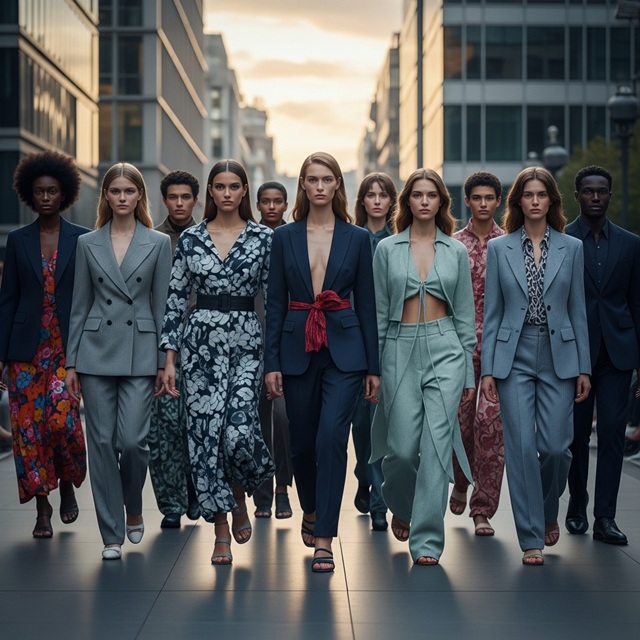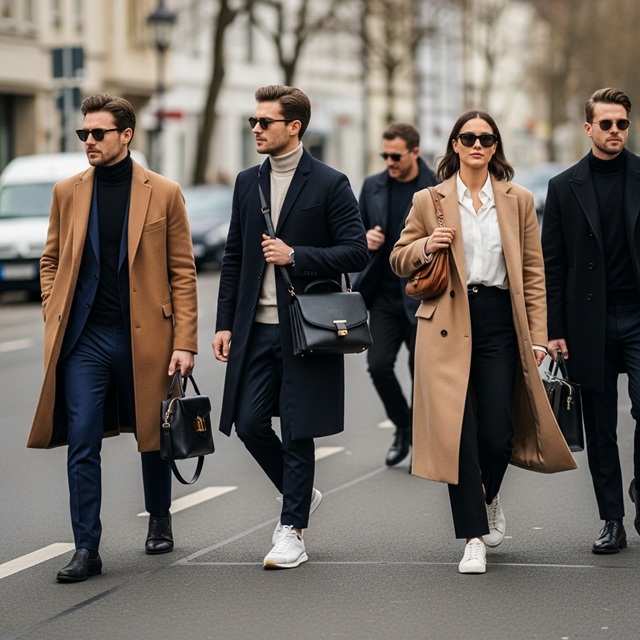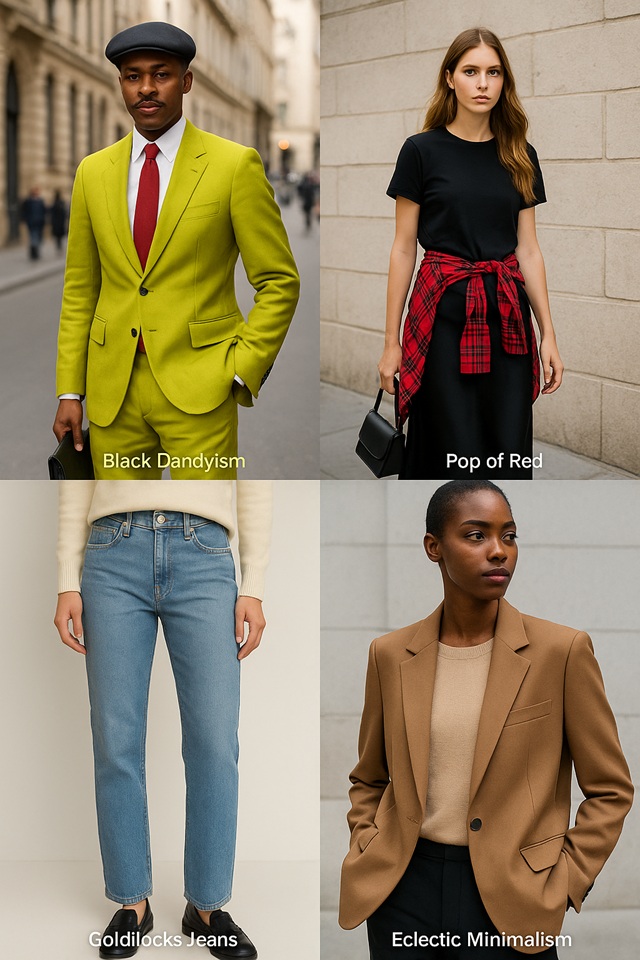European Fashion Trends
Fashion in Europe has always been more than clothes. It reflects culture, identity, and shared emotions. Over the years, European fashion has evolved from being a symbol of class separation to one that embraces inclusivity and self-expression. Today, designers and wearers across Europe are shaping trends that speak of unity, diversity, and transformation.
The Changing Face of European Fashion
Fashion in Europe once carried the weight of history—monarchs, class, and status defined who wore what. But over time, the continent’s designers began to use fashion as a form of communication. Instead of separating people, it became a space to connect.
Brands like Gucci, Balenciaga, Dior, and Prada are now shifting towards collections that tell stories of shared humanity rather than privilege. This shift is seen not just on runways, but on streets, social platforms, and independent labels that represent different voices and communities.
Embracing Diversity Through Design
One of the biggest transformations in European fashion is its growing embrace of diversity. From models of different ethnicities to designers with unique cultural backgrounds, the fashion industry is slowly breaking free from its old patterns.
For instance, London Fashion Week and Paris Fashion Week now highlight designers from Africa, the Middle East, and Eastern Europe. Their collections bring in bold prints, cultural symbolism, and innovative silhouettes that redefine what “European” means in fashion.
This change has not only challenged old stereotypes but has also encouraged younger designers to merge their personal stories with their creations. Many now see fashion as a way to fight racism and promote inclusion.
The Rise of Sustainable and Ethical Fashion
Europe’s fashion transformation isn’t just cultural—it’s environmental too. The continent has taken a strong stance on sustainability, making it one of the world’s leaders in ethical fashion practices.
Countries like Sweden, Denmark, and the Netherlands are at the forefront of eco-conscious design. Brands such as Stella McCartney, Ganni, and Patagonia Europe are pushing for recycled fabrics, fair wages, and circular production systems.
Shoppers are also becoming more aware. Many now prefer vintage, upcycled, and second-hand items from online stores like Vinted and Depop. This mindset shift reflects a growing understanding that fashion can be both stylish and sustainable.
Related: Fashion Standards in Germany
Streetwear Meets Elegance
European street fashion has found the perfect balance between comfort and sophistication. Think of Milan’s sleek tailoring, Berlin’s edgy urban style, and Paris’s effortless chic. This blend has created a new wave of streetwear that combines high fashion with real-world practicality.
Luxury brands are partnering with street labels to produce clothing that speaks to everyday life while maintaining elegance. For example, Louis Vuitton’s collaboration with Supreme changed the way people view luxury streetwear. It blurred the lines between exclusivity and accessibility, giving rise to what some call “democratic fashion.”
Streetwear today is not just about sneakers and hoodies—it’s a reflection of attitude and belonging. Whether you’re in Barcelona or Brussels, the streets are the new runway.
Fashion as a Symbol of Togetherness
The abstract inspiration behind modern European fashion—love and transformation—is visible everywhere. Designers are not just creating pieces for aesthetics; they’re using fabrics and color to send messages of unity and hope.
For example, collections inspired by post-war Europe often use soft palettes, reconstructed garments, and mixed materials to represent healing. Similarly, multicultural patterns and embroidery symbolize the continent’s growing cultural exchange.
From Vivienne Westwood’s activism-driven designs to Olivier Rousteing’s inclusive vision at Balmain, fashion is helping redefine Europe’s social landscape—moving from division to togetherness.
Minimalism vs. Maximalism: A Creative Tug of War
European fashion right now is split between two strong trends: minimalism and maximalism.
-
Minimalism thrives in Scandinavian countries, where clean lines, neutral tones, and simplicity dominate. Brands like COS, Acne Studios, and Arket embody this aesthetic.
-
Maximalism, on the other hand, shines in cities like Paris and Milan, where bold prints, textures, and exaggerated silhouettes tell stories of confidence and creativity.
This contrast shows that European fashion isn’t about one single identity—it’s about freedom of choice. You can be understated or loud, and both are equally celebrated.
Influence of Technology and Digital Platforms
Fashion is also adapting to digital transformation. Virtual fashion shows, digital garments, and influencer collaborations have reshaped how trends spread.
Social media platforms like Instagram, TikTok, and Pinterest now play a major role in what becomes fashionable. A new designer in Prague or Lisbon can gain worldwide attention overnight.
Digital fashion houses like The Fabricant are also creating virtual clothing that exists only in digital form, merging fashion with technology in a completely new way. This innovation represents the future of European fashion—borderless, creative, and inclusive.
Local Designers Making Global Impact
Europe isn’t just about the big names. Independent designers are shaping trends with authenticity and courage.
-
Marine Serre (France) is known for her crescent moon patterns and upcycled collections.
-
Richard Quinn (UK) has brought back floral prints with a modern twist.
-
Marta Jakubowski (Poland) and Nensi Dojaka (Albania) are redefining femininity through sharp tailoring and soft fabrics.
Their designs celebrate individuality while pushing for social awareness, showing that fashion can be powerful when it’s personal.
European Fashion and Cultural Transformation
Fashion in Europe has become a cultural bridge. It connects people through shared ideas, movements, and emotions. From anti-racism campaigns to gender-neutral collections, the industry reflects a broader transformation toward unity.
Modern collections no longer follow strict gender rules. Unisex designs are now common in cities like Copenhagen and Berlin, where creativity takes priority over tradition. This approach encourages inclusivity and self-expression across all walks of life.
Also read: Ladies Trending Fashion in Uganda
Summary
European fashion has evolved into something more meaningful than trends or luxury. It’s a language of love, change, and inclusion. From sustainable fabrics to diverse models and streetwear influences, every piece tells a story of transformation.
The continent’s designers are not only shaping what people wear, but also how they think and connect. Fashion is no longer about separating people—it’s about celebrating them.
FAQs
1. What defines European fashion today?
European fashion today is defined by diversity, sustainability, and individuality. It blends tradition with modern expression, highlighting creativity over conformity.
2. Which European countries influence global fashion the most?
France, Italy, and the UK remain at the top, but newer voices from Scandinavia and Eastern Europe are gaining strong recognition.
3. How is sustainability shaping European fashion?
Many European brands are adopting eco-friendly fabrics, ethical production, and recycling systems. This shift is making sustainability a core part of fashion identity.
4. What role does streetwear play in Europe’s fashion scene?
Streetwear has become a major influence, merging comfort with luxury. It represents youth culture, freedom, and inclusivity.
5. Is European fashion still dominated by luxury brands?
While luxury brands remain iconic, independent and digital-first designers are changing the landscape. They bring authenticity and fresh ideas that appeal to younger audiences.






